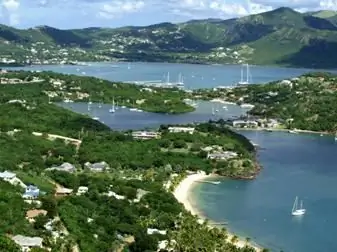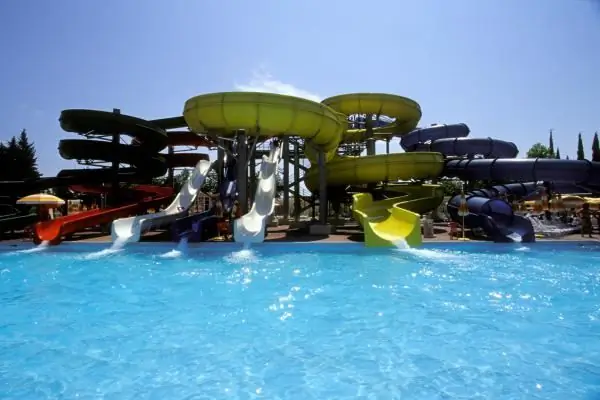- Author Harold Hamphrey [email protected].
- Public 2023-12-17 10:06.
- Last modified 2025-01-24 11:10.
Veliky Novgorod is a city where there is no shortage of attractions. It has long been one of the most visited places on the map of our country by tourists and continues to delight archaeologists with new finds that shed light on the history of Ancient Russia. Many of them were made on the territory of the Rurik Settlement, from which Veliky Novgorod originated.

History of the study of the archaeological site
Rurik's Settlement (Veliky Novgorod), the photo of which is presented below, scientists began to study from the beginning of the last century. The first excavations were carried out by archaeologist N. Polyansky. In the summer of 1910, his expedition was replaced by a group of researchers led by the artist-philosopher N. Roerich, and from 1975 to this day (with interruptions) work there has been carried out by the Institute of the History of Material Culture of the Russian Academy of Sciences under the leadership of E. N. Nosov.
As a result of research in the vicinity of Gorodishche,discovered such ancient cultural layers as:
- remains of a Neolithic site (2-3 millennium BC),
- Iron Age settlement (first millennium BC).
The most significant archaeological finds made at the settlement
When studying the cultural layers of the 9th-11th centuries, scientists discovered many items of clothing and military equipment. Also found were birch bark letters of various contents, several princely seals made of lead, three treasures of dirhams, a large number of Arabic, Byzantine and Western European coins, glass, carnelian and crystal beads, as well as pieces of almonds and walnut shells. All these artifacts testify to the active trade relations of Novgorodians with near and far states of medieval Europe and Asia.

During the excavations, parts of scales, weights, Frisian combs, wooden toy swords, sinkers from weaving looms, glass traditional old Russian bracelets, counting tags, spindle whorls, covers and birch bark bottoms, shards of amphorae and much more were also found.
Rurik's Settlement (Veliky Novgorod) again made people talk about itself in 2003, when a birch bark letter was found there, which is a fragment of a letter from several brothers to their parents, in which the Prince of Novgorod was mentioned.
Varangian trace
According to the number of Scandinavian finds, Rurik's Settlement, along with the historical settlement of Gnezdovo, located on the banks of the Dnieper,is the richest excavated in Eastern Europe. These two objects directly follow the most famous centers of Scandinavia, Birka and Hedeby. Particularly interesting are ritual objects and ornaments. Among them are shell-shaped, equal-armed and ring-shaped brooches, 2 bronze pendants with runic inscriptions, iron hryvnias with symbols of Thor's hammers, a figure of Valkyrie made of silver, etc.

Rurik's Settlement (Veliky Novgorod): the history of foundation
The most famous reference to this object can be found in The Tale of Bygone Years. According to one of the interpretations of this historical document, in 862 the inhabitants of the lands on which Veliky Novgorod was later founded called on the Varangian Rurik to rule on their land. On the site of Gorodische, a princely residence was built in the form of a fortress village, in which he and his squad lived. She was at the source of the Volkhov, right on the way "from the Varangians to the Greeks."
Further history of Ryurikov Settlement
In the 9th-10th centuries, the princely residence on the banks of the Volkhov became the first settlement in the area of modern Veliky Novgorod, that is, the Old City. It occupied a relatively small area (6 - 7 hectares) on a hill, which was located on an island in the middle of a floodplain. The rampart of the settlement was 8 meters wide and 5 meters high.
The central part of the Rurik settlement was fortified with a rampart with wooden structures and protected by a moat. The settlement had an extremely advantageous location, as it was surrounded by waterborders, and from the height of its hill it was easy to follow the passage of ships from the Volkhov River to Lake Ilmen.
Opposite the fortress there was a pagan sanctuary - Peryn. Judging by the archaeological finds, a significant part of the population of the settlement was engaged in crafts, including bronze casting, bone carving, etc.

An ancient settlement after the 10th century
In the 990s, Gorodishche, retaining the role of a princely residence, gave way to the functions of the socio-economic center of the region to a settlement that arose around the episcopal court.
After the uprising of the Novgorodians in 1136, the residence of the prince continued to be located on its territory. However, it was under the control of the mayor, who was in charge of Veliky Novgorod.
Rurik's Settlement (address Novgorodsky district, village Settlement) at one time became the place where the future Prince Alexander Nevsky spent his childhood. Dmitry Donskoy, Vasily Temny, Ivan the Third and Ivan the Terrible stayed or stayed there at different periods of history.
Church of the Annunciation
Rurik's Settlement (Veliky Novgorod) is also interesting thanks to the ruins of the early 12th century church located there. In 1103, it was founded by the son of Vladimir Monomakh and the ruler of Novgorod, Mstislav Vladimirovich. The Church of the Annunciation became the second after St. Sophia was a stone building of the city and the princely residence was moved there. It, along with St. Nicholas and St. George's Cathedrals (St. Yuriev Monastery), was built by Peter, the first Russian architect mentioned in the annals.
In 1342-1343 on the spotdilapidated temple, a new one was erected, which stood for 600 years, until it was bombed by enemy artillery during the Second World War. The ruins of the Church of the Annunciation give a visual representation of the damage done to the cultural heritage of our country during the invasion of the fascist hordes.

Prince's Stone
Rurik's Settlement (Veliky Novgorod) has become one of the main centers of the solemn celebration of the 1150th anniversary of Russian statehood. On September 22, 2012, the opening of the "Prince's Stone" took place on the territory of the historical monument. It is a huge boulder weighing about 40 tons. It is engraved with a quote from the famous Radzivilov Chronicle, which testifies to the important role of the settlement in the history of Russia.
Veliky Novgorod, Rurik's settlement: how to get there by car
This iconic landmark can be reached by private or public transport. If you are going to Rurik's Settlement (Veliky Novgorod), the signs will tell you how to get there by car. Relatively recently, the road to it was laid out with yellow sandstone. This means that if you turn from the Moscow-Veliky Novgorod highway to Sholokhovo, drive to Spas-Nereditsy and then to the barrier, then you will have to walk only 2-3 minutes to the ruins.
You can also get to Rurik's Settlement by bus number 186 (departure time at 7:25, 8:25, 14:00, 19:05), next to the Church of the Savior on Nereditsa. After leaving at the final stop, you need to return to the highway and walk along the bulk dam to the riverVolkhov. Next, you need to turn left and follow the paved path along the river to the point of interest.
In the summer months, walks along the Volkhov are carried out on the Veche motor ship, the program of which includes a visit to Rurik's settlement. Tour schedule: at 11:00 on Saturdays and at 14:15 - on Sundays.

Reviews
According to those who have already traveled along the route Veliky Novgorod - Rurikovo Gorodishe (the distance in km from the center is 2), after laying a new road, you can get there without any problems by car of any brand. The exception is during the flooding of the Volkhov River, when visiting this attraction is not recommended.
Positive reviews are usually devoted to the magnificent views that open from the hill of the settlement to the water surface, as well as to the Kremlin and St. George's Monastery. In addition, a sightseeing trip can be combined with relaxing on the beach and a barbecue picnic in a recreation area located next to the attraction. As for the comments of tourists, many travelers claim that the whole impression of visiting the former residence of Rurik is spoiled by the cemetery located next door. In addition, some visitors note that although this place certainly has great excursion potential, it can still be classified as a tourist attraction with great difficulty.

Now you know what relatively little-known sights you can see,going to Veliky Novgorod. Rurikovo Settlement, which can be reached both along the Volkhov and by road, is a landmark place where Russian statehood was born, so everyone who cares about the history of his country should visit it.






